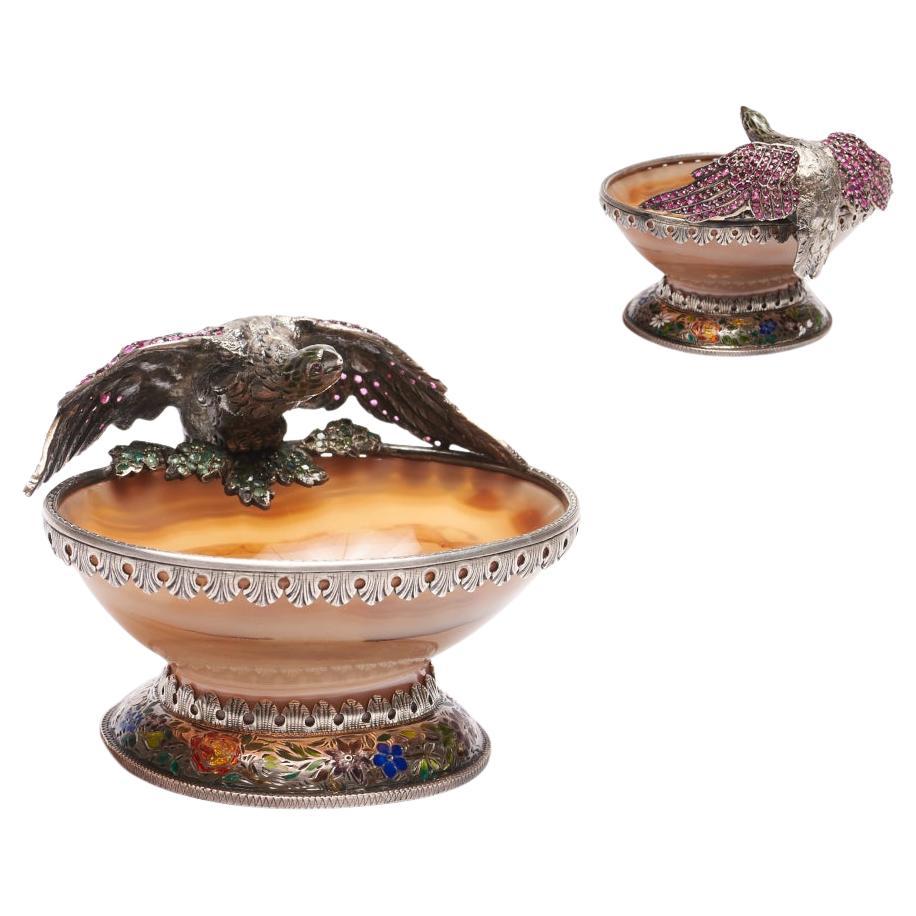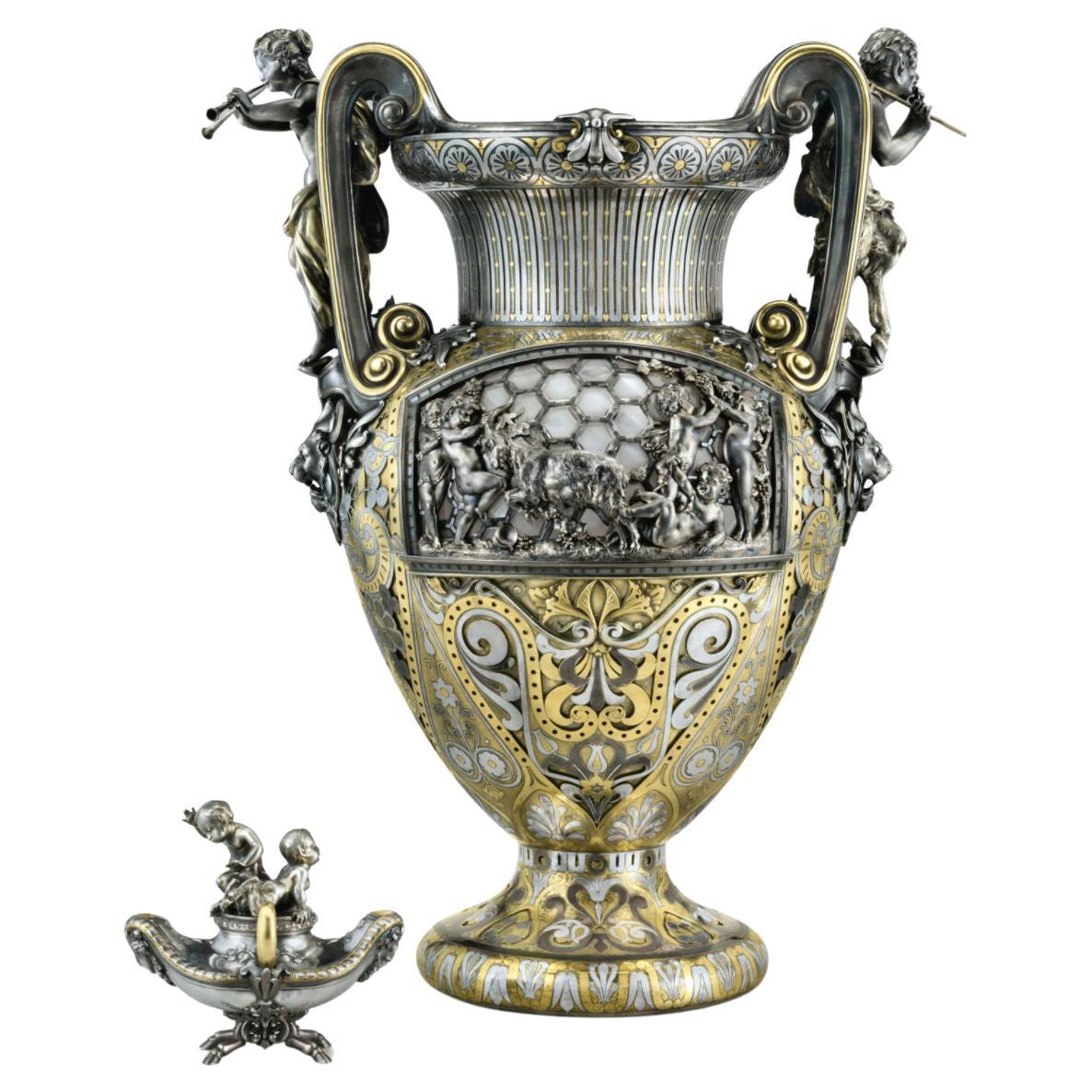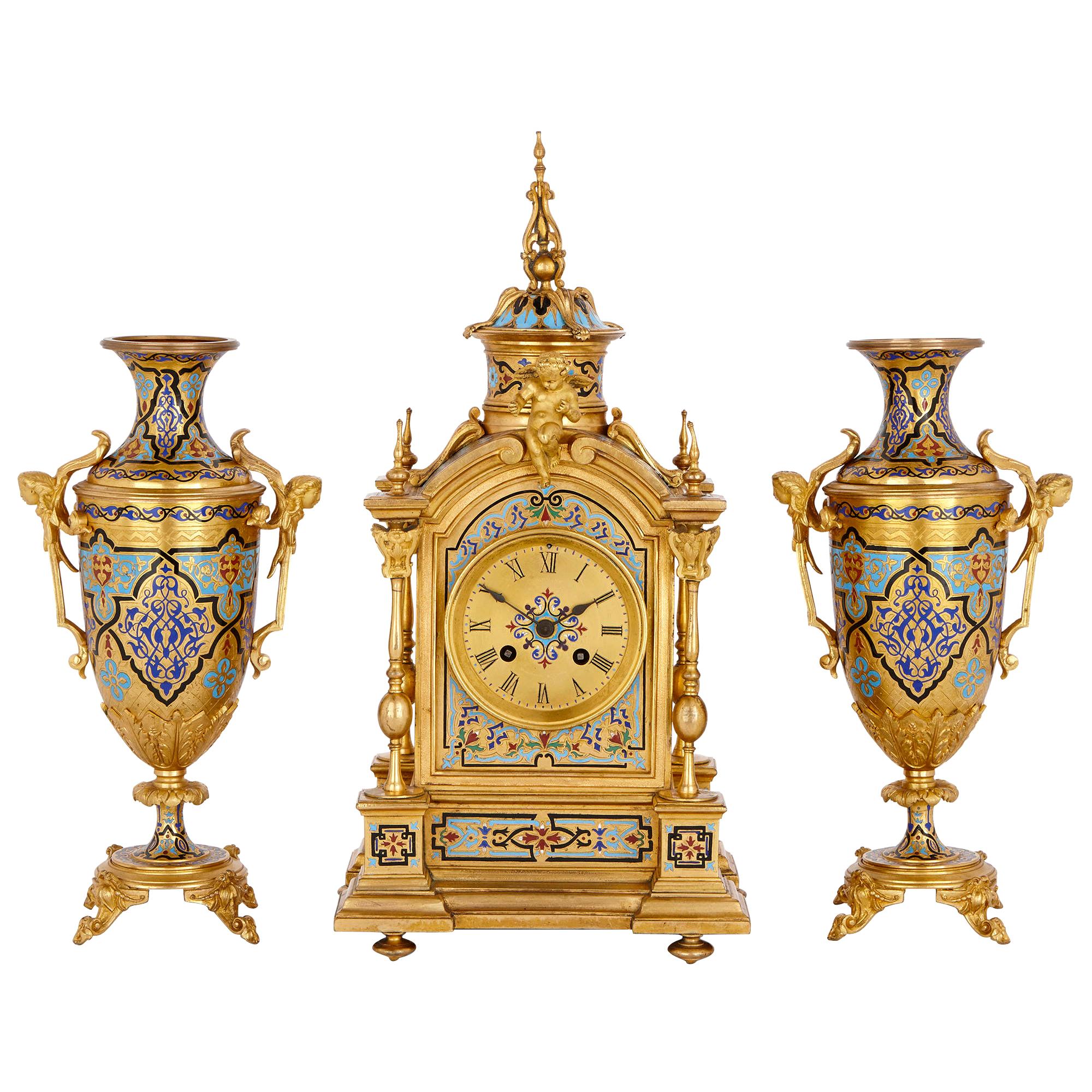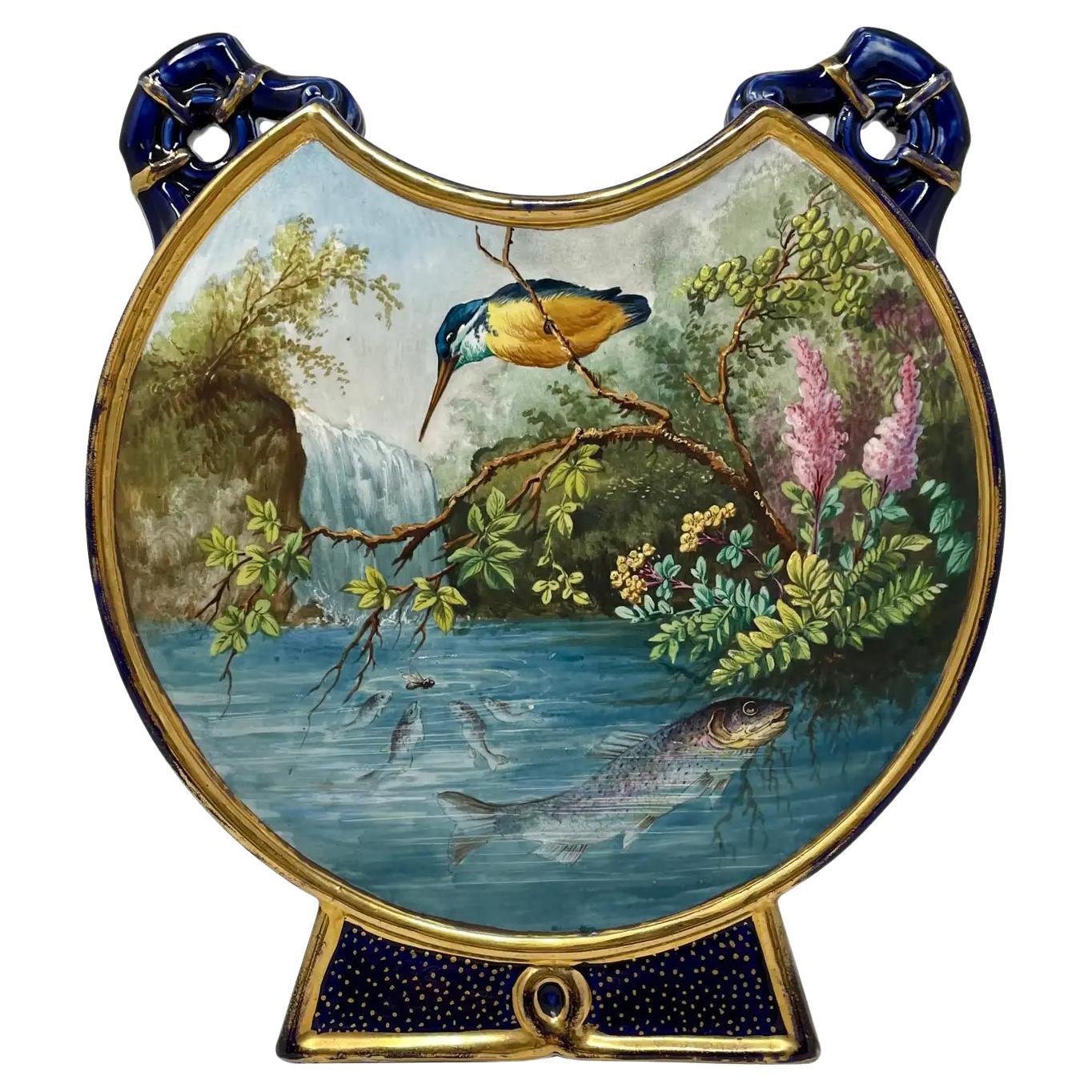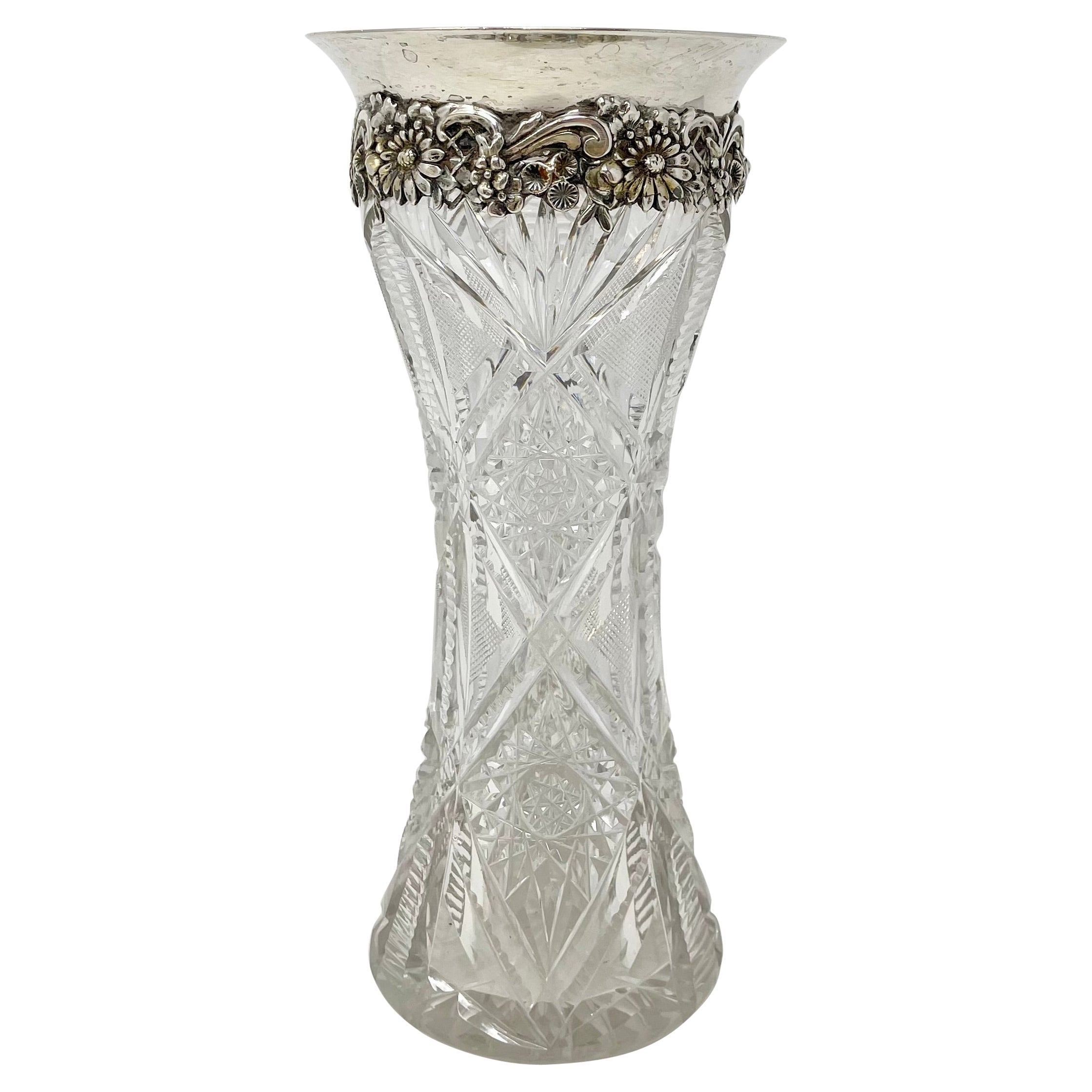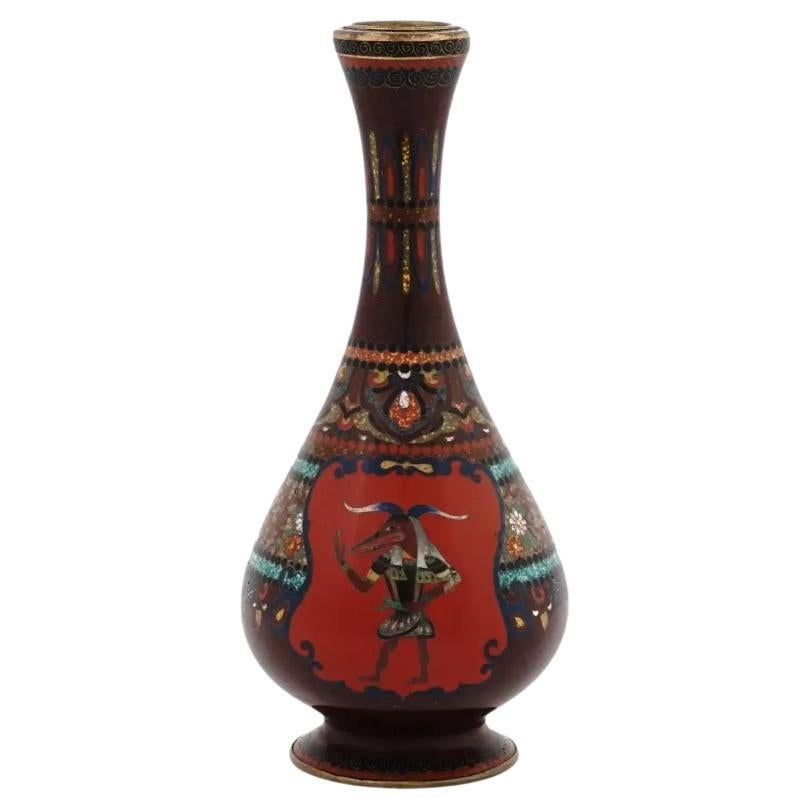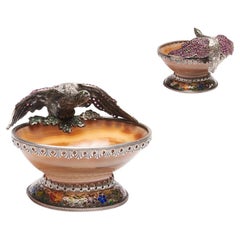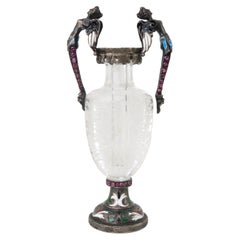
Antique Austrian Solid Silver, Enamel and Gem Set Figural Agate Vase, circa 1880
View Similar Items
Want more images or videos?
Request additional images or videos from the seller
1 of 11
Antique Austrian Solid Silver, Enamel and Gem Set Figural Agate Vase, circa 1880
About the Item
- Dimensions:Height: 6.3 in (16 cm)Width: 2.17 in (5.5 cm)Depth: 3.94 in (10 cm)
- Style:Renaissance Revival (In the Style Of)
- Materials and Techniques:
- Place of Origin:
- Period:
- Date of Manufacture:circa 1880
- Condition:In Great condition - No damage.
- Seller Location:Royal Tunbridge Wells, GB
- Reference Number:Seller: A43661stDibs: LU1348223199712
About the Seller
5.0
Platinum Seller
These expertly vetted sellers are 1stDibs' most experienced sellers and are rated highest by our customers.
Established in 2014
1stDibs seller since 2015
367 sales on 1stDibs
More From This SellerView All
- 19th Century Austrian Solid Silver-Gilt & Enamel Cutlery Set, Vienna, circa 1880By Hermann RatzersdorferLocated in Royal Tunbridge Wells, KentAntique late-19th century Austrian solid silver-gilt and hand painted enamel cutlery set for 6 person, highly decorative and elaborate cast silver-gilt ...Category
Antique 19th Century Austrian Serving Pieces
MaterialsSilver, Enamel
$12,026 / setFree Shipping - 19th Century Austrian Solid Silver & Enamel Lidded Bowl, Vienna, circa 1870By Ludwig PolitzerLocated in Royal Tunbridge Wells, KentAntique 19th century Austrian Renaissance revival solid silver enameled lidded bowl / trinket box, the body supported by four scroll feet, beautifully enamelled throughout dipicting ...Category
Antique 19th Century Austrian Renaissance Revival Decorative Bowls
MaterialsSilver, Enamel
- Austrian Solid Silver-Gilt and Enamel Reliquary by Rudolf Linke, circa 1890By Rudolf LinkeLocated in Royal Tunbridge Wells, KentAntique 19th century Austrian rare and unusual solid silver-gilt and enamel reliquary, pierced and decorated with multicolored enamels, sides set with carved rock crystal panels and ...Category
Antique 19th Century Austrian Centerpieces
MaterialsRock Crystal, Enamel, Silver
- 19th Century Austrian Chinoiserie Solid Silver Tea Set, Klinkosch, c.1880By J. C. KlinkoschLocated in Royal Tunbridge Wells, KentAntique late-19th century Austrian Chinoiserie solid silver three piece tea set, comprising of a teapot, sugar bowl and cream jug. Exceptionally hand crafted, of melon shape, repouss...Category
Antique 19th Century Austrian Chinoiserie Tea Sets
MaterialsSilver
- Antique Russian Import Solid Silver Impressive Centrepiece, circa 1880Located in Royal Tunbridge Wells, KentAntique 19th century Russian import solid silver centrepiece in a form of a palm tree, the base of the tree decorated with various exotic foliage and applied with a figure of an ostr...Category
Antique 19th Century German Centerpieces
MaterialsSilver
- Antique 19th Century Austrian Silver, Enamel & Rock Crystal Spoons c.1880By Rudolf LinkeLocated in Royal Tunbridge Wells, KentAntique 19th Century Austrian rare solid silver & enamel rock crystal set of three spoons. Scallop shaped carved rock crystal bowls set with highly decorative, pierced and enamelled, cast solid silver handles, comes in its original retail case. Hallmarked Austrian-Hungarian Dog...Category
Antique 1880s Austrian Other Crystal Serveware
MaterialsRock Crystal, Silver, Enamel
You May Also Like
- Antique 19thc Austrian Solid Silver, Enamel & Gem Set Figural Agate Bowl C.1880Located in Ελληνικό-Αργυρούπολη, GRAntique 19th century Austrian Renaissance revival style solid silver-gilt enamelled and gem-set figural agate dish, the agate bowl supported by an oval domed foot, beautifully champl...Category
Antique 19th Century Austrian Renaissance Revival Sterling Silver
MaterialsAgate, Silver, Enamel
- A Carved Rock Crystal, Enameled Silver Gem Set Miniature Vase, Austria, 1880By Hermann BöhmLocated in Pasadena, CAA Carved Rock Crystal, Enameled Silver Gem Set Miniature Vase. The body is hand carved quartz (rock crystal) with flowers, birds and mythical heads attached to the branches, hinged enameled silver gem set handles attached to the silver rim and mounted atop of the body as well as the enameled silver gem set base attached to the end of the body. Austria, 1880 Apparently unmarked Attributed to: Hermann Bohm (1866 - 1922) Hermann Böhm (also spelled Boehm) was a famous silversmith and enameler working in Vienna between the end of the 19th century until 1922. Originally from Hungary, he moved to Austria in 1866 and started working as a silversmith with his father-in-law Ludwig Politzer. He specialised mainly in vases, table ornaments and novelty objects...Category
Antique Late 19th Century Austrian Victorian Vases
MaterialsQuartz, Rock Crystal, Silver, Enamel
- Antique Viennese Enamel Cornucopia Vase C. 1880 Vienna AustriaLocated in London, GBA magnificent Antique 19th century Silver & Viennese Enamel Vase in the shape of a large cornucopia supported by a silver griffin on a domed pedestal ...Category
Antique 19th Century Austrian Vases
MaterialsSilver, Enamel
- Boucheron Parcel Gilt Silver Vase and Oil Lamp circa 1880By Fréderic BoucheronLocated in New York, USOur important parcel-gilt and patinated silver and glass-mounted vase and matching oil lamp were designed by Paul Legrand (1840-1910) and crafted by the silversmith, Charles Glachant, for Boucheron of Paris, circa 1878-1880. 21 in tall and 16.5 in wide (53.4 by 41.9 cm). 28.56 lbs, 457 oz, 14,210 g. Provenance: presented to or purchased by Jean-Baptiste Pezon (1827-1897); acquired by a European private collector, perhaps on the death of Jean-Baptiste Pezon in 1897, by descent; acquired by YM Antiques, 2017. This double walled vase has an amphora form, with body and foot with silver, gilt and patinated and stylized flowers, anthemions and sprays of cherries against an etched and matted ground pierced to reveal a gilt inner wall. The upper body is detachable via a slip-lock, and mounted on both sides with arched panels formed of hexagonal beveled glass tiles. One glass panel applied with bacchic infants taunting a rearing goat and the other side with infants feeding grapes to a lioness under a looming bust of a satyr. The patinated and gilt upswung loop bifurcated handles are mounted with fully modeled figures of Pan bearing a syrinx and thyrsus and a draped maenad playing two flutes, both above roaring lion heads, the rim inset with a slip-lock detachable gilt bowl etched with masks of various representations of Bacchus spaced by ribbons and trophies and with scrolling fruiting vines. The base of interior with detachable base metal drip pan to accommodate the removable oil lamp designed to illuminate the glass tiles from within. The lamp is raised on four hoof feet, the upturned ends cast underneath with masks and with detachable cover mounted with two infant satyrs and flanked by gilt loop handles. The bacchic themed design featuring cartouches depicting infants taunting a goat and lion, plus prominent lion masks at the handles, certainly appealed to Boucheron's customer, Jean-Baptiste Pezon (1827-1897), who is believed to have commissioned the piece. Pezon was the celebrated lion tamer and headliner of the Grande Menagerie whose profession brought him great fame and fortune in Paris. Born a shepherd boy in Lozere, he is said to have left his home at the age of seventeen in the company of a wolf he had captured and trained years earlier. He headed to Paris and by the age of twenty-one purchased his first lion who he named Brutus. The animal is said to have inspired the Lion of Belfort, the monumental red standstone sculpture by Frederic Bartholdi erected in Belfort in 1880. Toulouse-Lautrec was among his admirers and friends, visiting Pezon's Great Lozerian Menagerie to sketch animals. A large bronze sculpture of Pezon atop a female lion adorns the Pezon family tomb in the Pere Lachaise Cemetery in Paris, as seen in our image here. The vase and detachable bowl are marked on the underside with the silversmith's mark of Charles Glachant. The underside and upper rim of the lower body is engraved "Fic Boucheron Paris". The lamp is marked on underside and flange of cover for Glachant. Boucheron archives indicate the vase was inspired by the amphora vases created by the Greek potter, Nikosthenes, 550-510 BC. The Nikosthenic amphora vases are a form of Attic vase recognized for their angular amphora form with broad flat handles. Potted of bright orange-red clay, they were decorated with plant and animal motifs within distinct friezes, with the most significant defining feature being the black figure painting, often highlighted with white accents. In this vase Legrand re-imagines the striking contrast of the black figures against a warm ground through the use of patina and gilding. His inventive use of piercing and double-wall construction create additional levels of texture and depth throughout the body. The same combination of ornamentation was employed in a ewer designed by Legrand in 1880 in the Islamic taste. (See lot 77 of Christie's sale in New York on October 22, 2009.) Edmé Bouchardon (1698-1762), royal sculptor to Louis XV, may have provided Legrand with inspiration for the vase's iconography. The panel featuring bacchic infants taunting a rearing goat is very similar to a bas relief representation of Winter designed by Bouchardon for the Fontaine des Quarte-Saisons on rue de Grenelle, Paris. Bouchardon debuted his plaster model for the bas relief in 1741, and the fountain was completed in 1745. The Boucheron firm, founded by the celebrated jeweler, Frédéric Boucheron...Category
Antique 1880s French Greek Revival Vases
MaterialsSilver
- Antique Gilt Bronze and Champlevé Enamel Clock SetLocated in London, GBThis beautiful clock set, which comprises of a mantel clock and a pair of vases, was designed in France in circa 1870 in a wonderful Renaissance Revival style. The set has been craft...Category
Antique Late 19th Century French Renaissance Revival Mantel Clocks
MaterialsOrmolu, Bronze, Enamel
$10,766 / set - Pair of French Bronze Figural and Glass Vases, circa 1880Located in New York, NYPair of French bronze figural and glass vases, circa 1880.Category
Antique 1880s French Vases
MaterialsBronze
